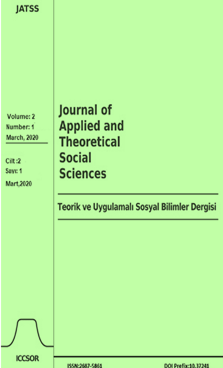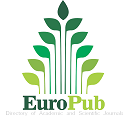End of the Time and Rise of an Empire: an Istanbul Myth at the Dawn of Muslim Millennium
Abstract
When Sultan Mehmet II conquered the Constantinople, he ended the biggest known empire in history and planned to build his own empire over the ruins of the former. But this imperial ideal required a new multicultural, multi-religious and multilingual order. Mehmed II wanted the capital of this order to be Constantinople, which has been the capital of the enemy for nearly a century. While trying to realize these mentioned ideals, he was exposed to countless opposition from the Ottoman society. The basis of these lies on the fears of the begs who did not want to abandon their ancestors' lifestyle and were afraid of being assimilated by settling in Constantinople. The settlement of this city, which is the source of countless demons and hostility to Islam, turns into a kind of conflict zone for ideals of the Sultan and the conservatism of the begs. This period also gave rise to interpretations fed by traditional and religious narratives that the apocalyptic day is approaching, with the world witnessing unprecedented innovations. In this study, 'Fi Beyan-ı Tarih-i Konstantiniyye min Evvela to Ahire', which is an anonymous Istanbul historical work estimated to be produced at the end of the 15th century, was examined. Due to the mythical structure and indirect analogy of the narrative, the study was made on the stance of the opposition towards imperial ideal of Mehmed II and the belief that the Day of Judgment is approaching.
Metrics
References
Fleischer, Cornell H (2018), “A Mediterranean Apocalypse: Prophecies of Empire in the Fifteenth and Sixteenth Centuries”, Journal of the Economic and Social History of the Orient, 61, 18-90. DOI: https://doi.org/10.1163/15685209-12341443
Giese, Friedrich (1992), Anonim Tevarih-i Al-i Osman. Edited by Nihat Azamat. İstanbul: Edebiyat Fakültesi Basımevi.
Kafesçioğlu, Çiğdem (2009), “Representing a City: Constantinople and its Images”. Chap. 3 in Constantinopolis / Istanbul. University Park, Pennsylvania: The Pennsylvania University Press.
Kritovoulos. History of Mehmed the Conqueror. Translated from the Greek by Charles T. Riggs. Princeton, New Jersey: Princeton University Press, I954.
Necipoğlu, Gülru (2012), “Visual Cosmopolitanism and Creative Translation: Artistic Conservations with Renaissance Italy in Mehmed II’s Constantinople”, Muqarnas, 29, 1-81. DOI: https://doi.org/10.1163/22118993-90000183
Şahin, Kaya (2010). “Constantinople and the End Time: The Ottoman Conquest as a Portent of the Last Hour”, Journal of Early Modern History, 14, 317-354. DOI: https://doi.org/10.1163/157006510X512223
Yerasimos, Stefanos (1993). Konstantiniyye ve Ayasofya Efsaneleri. Translated by ŞirinTekeli. Istanbul: Iletişim Yayıncılık.






















